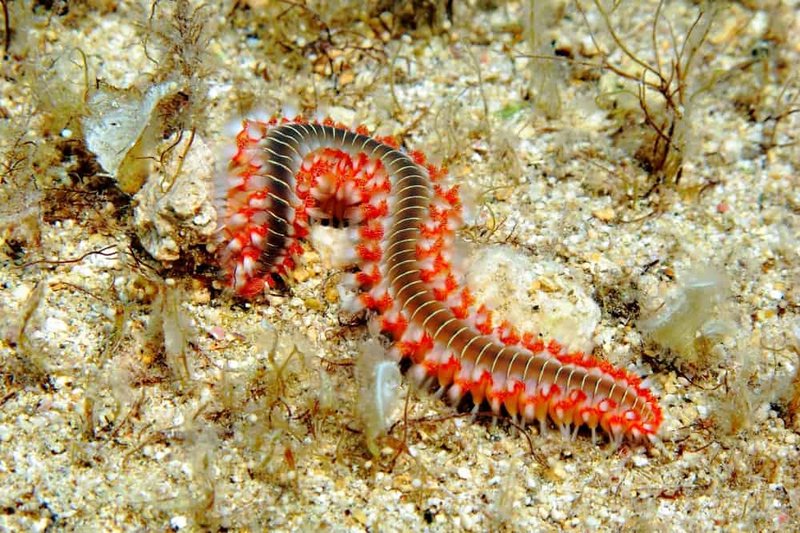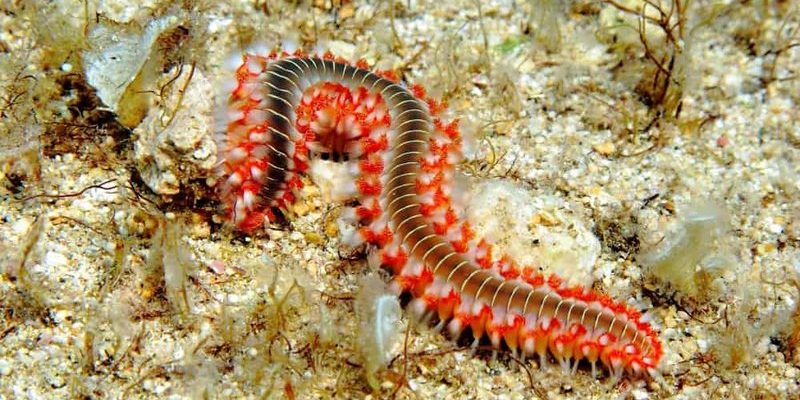
Think of bristle worms as the ocean’s little cleanup crew. They thrive in sandy and muddy environments and play a crucial role in keeping ecosystems healthy. But just like a superhero, they come with their own set of powers—and that includes some risks. It’s a bit like encountering a friendly dog that also has a tendency to nip if provoked. So, what do you really need to know about these undersea dwellers, especially when it comes to their impact on humans?
What Are Bristle Worms?
Bristle worms belong to the class **Polychaeta** within the phylum Annelida, which is a fancy way of saying they’re segmented worms. There are over 10,000 species of bristle worms, and they vary in size, color, and habitat. Some measure just a few centimeters, while others can grow over a meter long. Their bodies are segmented and covered in tiny bristles—hence the name.
These worms can be found in a variety of environments, ranging from shallow coastal waters to deep-sea habitats. You might spot them hiding in crevices, burrowing into the sand, or even floating in the water column. They’re typically scavengers, feasting on decaying organic matter, which helps recycle nutrients back into the ecosystem. Pretty neat, right?
Now, while they might seem harmless at first glance, there’s a bit more to the story. Their bristles, made of a tough material called chitin, serve as both a defense mechanism and a tool for movement. So, you might want to think twice before picking one up!
Are Bristle Worms Dangerous to Humans?
You might be asking, “Should I be worried about getting too close to a bristle worm?” Here’s the thing: while they’re not outright dangerous, they can deliver a sting that you won’t forget easily. The bristles of some species are equipped with tiny hooks and can break off in your skin if you handle them carelessly. This is similar to the way certain plants, like nettles, can irritate your skin.
The *sting* from a bristle worm isn’t usually life-threatening, but it can be quite painful. People have reported feelings of irritation, burning, and even swelling at the site of contact. If you’re allergic or sensitive, the reaction might be more intense. So, while bristle worms generally don’t pose severe health risks, it’s best to admire them from a distance, much like you would a potentially venomous snake.
Identifying Bristle Worms
Knowing how to identify bristle worms can help you avoid any unwanted encounters. Most have elongated, segmented bodies, often brightly colored, which can range from red and green to brown and gray. They sport numerous bristles on each segment, which can look almost like tiny hairs.
If you’re trying to spot one, look out for the following traits:
- Body Segments: Bristle worms have distinct segments that can be counted from head to tail.
- Bristles: The small bristles can be fine or more robust, depending on the species.
- Movement: They often wriggle quickly if disturbed, which can be quite a sight!
- Habitat: Find them in sandy areas, mudflats, or even rocky crevices.
To help protect yourself, familiarize yourself with these characteristics so you can steer clear if you come across them on your beach walks or during snorkeling adventures.
How to Handle Bristle Worms Safely
If you find yourself face-to-face with bristle worms, here are some simple guidelines to follow to keep your distance safely:
1. **Avoid direct contact:** It’s best to observe these interesting creatures without touching them. Think of them like a work of art in a gallery—better enjoyed from a distance.
2. **Use gloves:** If you must handle them, wear thick gloves to protect your skin from their bristles.
3. **Educate others:** If you’re with friends or family, share what you know about bristle worms, so everyone stays safe.
4. **Keep an eye out:** When swimming or wading in sandy areas, watch where you step or reach. This mindfulness can help you avoid any painful encounters.
By taking these precautions, you’ll have a better chance of enjoying your seaside adventures without the sting of regret—literally.
Benefits of Bristle Worms in Ecosystems
Bristle worms might sting, but they also play a vital role in the marine ecosystem. Think of them as nature’s little recyclers. Here’s how they contribute:
– **Nutrient Recycling:** By consuming dead organic matter, bristle worms help break it down and return nutrients to the environment. This process keeps the ecosystem healthy and thriving.
– **Food Source:** Many marine species, such as fish and sea turtles, enjoy dining on bristle worms. They provide an important food source in the oceanic food chain.
– **Habitat Creation:** As they burrow into the seabed, they help aerate the soil. This action creates a healthier habitat for other marine creatures.
Recognizing the contributions of bristle worms helps us appreciate them beyond their stinging potential. They’re essential cogs in a much larger machine.
So, are bristle worms harmful to humans? The answer is a qualified yes and no. They can sting and cause discomfort, especially if handled improperly. However, they also fulfill crucial roles in marine ecosystems. With a little awareness and caution, you can safely observe these fascinating creatures without any issues.
Next time you’re at the beach, think of bristle worms as part of the rich tapestry of life beneath the waves. Just remember to keep your distance and enjoy the wonders of nature—there’s plenty to see without getting too close for comfort!

